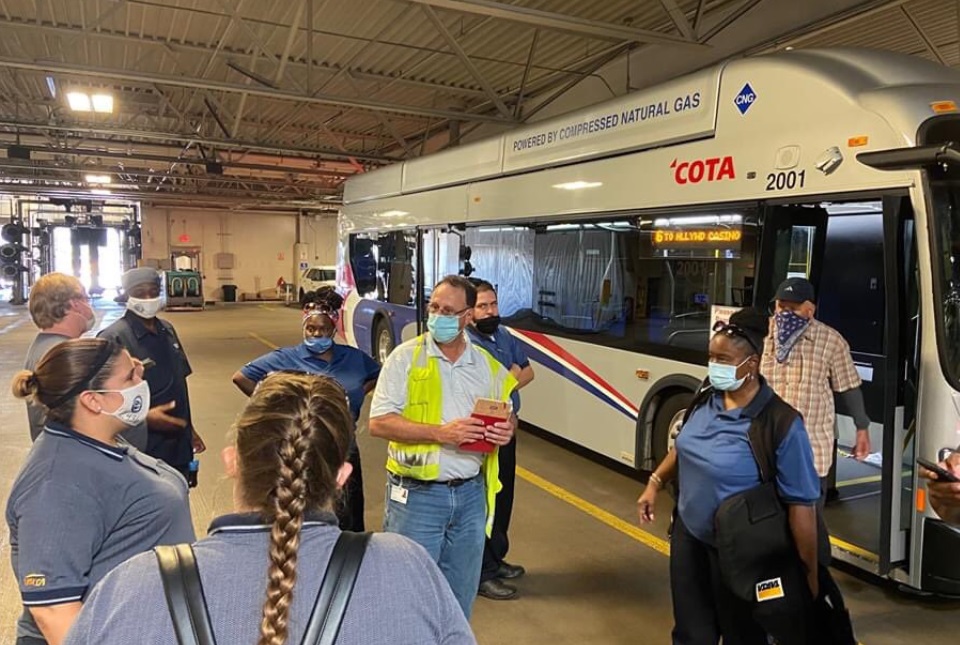Acknowledging the efforts and appreciating the contributions of an employee in the workplace can boost morale, increase job satisfaction and productivity. When employers create a welcoming environment and treat their employees as part of a team, that positive energy can be felt by riders, community providers or partner agencies. This blog will cover some fundamental elements of leadership, and how employee success can be celebrated and appreciated.

[HIRTA Public Transit]
12 ELEMENTS OF EMPLOYEE ENGAGEMENT
- I know what is expected of me.
- I have the material I need to do my work.
- I have the opportunity to do my best every day.
- In the past week, I have received recognition for doing good work.
- My supervisor, or someone at work, seems to care about me as a person.
- My professional development is encouraged.
- My opinions seem to count.
- The mission or purpose of my company makes me feel like my job is important.
- My coworkers are committed to doing quality work.
- I have a friend at work.
- In the past 6 months, someone has talked to me about my progress.
- This past year, I have had opportunities to learn or grow in my position.
source: Gallup, Inc.
It all Starts at the Top
Think of an organization in your community that attracts a lot of positive attention or is greatly trusted by the community, what are they doing that makes their business so great? If you ask their employees, they may point to employee benefits, innovative leadership, or flexible schedules to support them both in-and-out of work and make them to feel fully appreciated. The first impressions felt from transit riders, a community provider or partner agency when experiencing your service can have valuable or meaningful impact on the community.
Managers and leaders have differing styles and roles in an organization. Managers typically focus on planning, organizing, and controlling resources to achieve specific goals. Leaders, on the other hand, inspire and motivate people to work towards a common vision. While managers are necessary for ensuring tasks are completed efficiently, leaders are essential for driving innovation and progress. Many companies or organizations rely on comprehensive planning efforts to align that energy into successful outcomes – creating clear objectives and goals to work into every facet of their business, which is reliant on both effective managers and strong leaders to tie both elements together. Employee engagement should be included within your agency’s planning efforts as well as budgeting for uniforms, small items of appreciation or ongoing events.
Tools for Engagement and Appreciation
According to Gallup, employee engagement is “a foundational component to workplace outcomes” and is further defined by their “12 Elements of Employee Engagement” which can be used to examinee employee expectations or how they are being supported with the tools needed to excel in the workplace. For example, does an ADA Complementary Paratransit driver have the knowledge to safely onboard a passenger using a wheelchair, or have they been provided with the appropriate training and skillset to efficiently transport passengers to their desired destination? Paratransit drivers tend to have more 1-on-1 interactions with passengers, which requires a greater attention to the rider’s needs but can also open them up to being exposed to emotional drain – which is why support from management is vital to employee success.

[source: Central Ohio Transit Authority]
- Organize team-building activities, group outings, team lunches or happy hours.
- Implement a recognition or rewards program and allow co-workers to acknowledge achievements and hard work of their peers.
- Allow employees to give feedback and suggestions for improving the workplace.
- Encourage employees to participate in professional development opportunities, such as certification training or attending conferences.
- Host company-wide events, holiday parties, or volunteer outings to promote a sense of community.
The simplest task a manager can do is listen to their employees and to not assume everything is alright. Having regular check-ins, staff events or outings, employee nominated recognition, and staff shirts/hats or company swag helps them feel appreciated, welcomed and more than just a number. Acknowledging the efforts and appreciating the contributions of an employee in the workplace boosts employee morale, increases job satisfaction and improves productivity. When employers create a welcoming environment and treat their employees as part of a team, that positive energy can be felt by riders, community providers or partner agencies.
This blog post was written by Jeremy Johnson-Miller, Communications Manager at NADTC
Leave a Reply